In any long running franchise, whether it be anime, live action, or in a book, there is generally a central character. Quite often, that character drives the development of the entire story. Even other franchises may spin-off from that one source. It would be hard to imagine the entire thing without that single entities involvement.
For spy movies, it’s James Bond. Had the entire 007 series switched central characters every movie, it’s doubtful it would have thrived for this long. In Star Wars, Luke Skywalker is the one who the story revolves around. (Yes, I’m old school. There were three Star Wars movies. THREE. 🙂 )
In the Gundam universe, the driving character is the Gundam RX-78-2.
There had certainly been “stompy robot” characters before the RX-78-2, often affectionately referred to as Gramps. Yet when that series launched, the popularity of that mobile suit drove the franchise. Certainly there were other mobile suits, such as Gramps arch rival, the Zaku series of mobile suits. But just as Bond and Skywalker are intrinsically part of their properties, so is Gramps to his.
All The Grandchildren
Even as the anime franchise grows and evolves, every new iteration features a title mobile suit that alludes back to that original, classic design. The white armor, adorned with very simple red, blue, and yellow color is a hallmark of all of Gramp’s descendants. While the shades and saturation may vary a bit, or the prominence of the colors, any Mobile Suit Gundam fan can pick out the lineage. The Wing Gundam, Double 0 Gundam, Gundam Barbatos, or even the Unicorn Gundam… all display the basic characteristics of that original.
And of course what good would it be if that same mobile suit did not feature a heroic pilot? Just as the mobile suits fill the title role in each respective series, they are associated with a character of equal note. Amuro Ray, Kira Yamato, Setsuna F. Seiei, Mikazuki Augus, and so many others are familiar names to any fan of the series. They can’t be separated from the mobile suit they pilot.
I think that familiarity helps drive the popularity of the franchise. While each story is a bit different, there is a familiarity that produces a comfort level that fans seem to love.
And of course, from a sales perspective, it doesn’t hurt that each series produces more Gunpla to sell. Averaging 12 million Gunpla kits sold annually for 30+ years, Bandai is doing something right.
Respecting The History
While I’ve built quite a few Gunpla over the last few years, I’d deliberately waited to build a Master Grade RX-78-2. I’m nostalgic enough to have a level of respect for the history of the franchise, even though I’m new to it. I had a sense of wanting to “do it right”, so to speak. And while I’ve enjoyed my prior builds, I felt like those were in some ways a bit of “practice” to prepare for a Master Grade RX-78-2.
I have built the High Grade Gramps, using it as a bit of a palette for seeing how I wanted to weather this model. I was quite happy with how it turned out, yet all the while I knew it wasn’t the real target.
Of course, I am realistic… I know going in that this model will likely turn out looking like every other one I build for the most part. A single model doesn’t cause a jump in skill and finish generally. But in my mind, knowing why I waited to tackle this one, I felt it was time.
The Kit

There are quite a few versions available of the Master Grade RX-78-2. The Version 2 boxing seemed to very good, but I’d read great things about the Version 3 and Origin boxings.
Initially I’d selected the Version 3 kit, but after some disappointment with that kit (a story for another time), I decided to call an audible and go with the Origin kit.
The overall design is fairly simple, but I think it captures the original anime look much better than the 3.0. The bright primary colors are offset by the shiny white armor, and to my eye it just looks right.
The inner frame parts are nicely done, with good articulation. They’re not overly detailed, but I think they work. The legs, toros and waist sections can be pretty much fully assembled for priming and painting, while the arms were better left in smaller sections, as the armor parts had to be integrated in during assembly.
Everything was primed with Badger’s Stynylrez Black, and then given a coat of Vallejo Mecha Color Phantom Gray. All parts were drbrushed with Vallejo Model Color Sky Gray, and then given a wash of Vallejo Weathering Effects Petrol Spills, which is a virtual twin for Citadel’s Nuln Oil Gloss.
You’re Looking At The Heads
The head gave me a bit of a pause. Most of the kit parts were large enough to mount on clips, allowing for easy priming and painting. The head, however, had several smaller parts, For the sake of speed, though, I wanted to get it done fairly quickly. As I looked at the parts, a simple solution dawned on me.
First, I fully assembled the head, and then made sure I could easily disassemble it. (No disassemble! 😀 ) Once I was sure that I could get everything apart easily, I was ready to prime.
The assembled noggin was primed in Badger’s Stynylrez White. I wasn’t careful to avoid the various colors – all was given a thorough primer coat of white. I made sure to spray it from every angle, so that there would be complete coverage of all visible parts.
Next, I followed the primer coat up with my paint layer of a homemade “Spaceship White”, consisting of Tamiya XF-2 White, with a few drops of XF-55 Deck Tan and XF-19 Sky Gray. As before, I sprayed from every angle to get thorough coverage.
Once that had time to dry, I pulled it apart. The areas that would be visible were all shiny white. Because those detail areas were so small, it was a simple matter to paint them in by hand. Once painted, everything was reassembled. I didn’t see any gaps i paint coverage, and it had been quite a simple method to employ. It won’t be the last time I do that!
All The Armor
Painting the armor followed the internal frame. A few sections were assembled ahead of time, and then all parts were mounted up on clips.
White parts received a coat of light gray primer. This would make it easier to see where later white paint was applied. The red, yellow, and blue armor parts received a coat of white primer. using this as the base would result in nice, bright, full saturation parts when later painted.
The blue armor was treated to Vallejo Mecha Color Electric Blue, a really beautiful color that has a lot of “pop”. Red armor was given a coat of Vallejo Model Air Red, and the yellow sections were painted with Vallejo Game Color Yellow Gold, a color that I really like for its vibrancy.
Assembly was simple enough, as is typical with Bandai kits. The red parts that make up the lower torso did require a bit of finesse to get in place correctly, but I think it may have been as much a case of modeler ineptness as anything. The parts go together firmly, so there’s not a sense of “floppiness” to the mobile suit.
I was impressed with the design of the knee armor, as it moves separately from the thigh and shin armor – a very nice touch.
Next Up: The Fun Part
Of course, this is really just the beginning of the build. I’m not sure yet whether I’ll go for a fairly clean look overall, or opt for the “been bouncing around space and earth battling Char for months” look. Each has their appeal, of course.
So far, I am very happy with how this kit is turning out. It’s the right balance of detail and “homage” to the original design and look. I’ve read online some fairly extensive analysis of how this suit differs from the very original look in the first anime series, but to my eye – and to the casual observer – it looks the part of the classic RX-78-2.
Which is fitting, really. While many may see this as just a kids toy, in reality it’s one of the most lucrative franchises that has ever hit the media world. Generations, literally, have enjoyed this. I once saw photos from an article that showed three generations – grandfather, dad, and son, all sitting down building Gunpla. The grandfather had started when the kits had originally been released, introduced his son to it, and now the grandson was coming along too. It’s nice to see the hobby moving forward in that way.
For myself, I’m at that point in the build where I start saying to myself “don’t screw it up!” All has gone well up to now, and I feel I have a good basis for all the steps to follow. Of course, in the end it’s just a model kit.
But the kid in me – and some nostalgia – sees it as a bit of anime history.
That’s kind of cool to think about. 🙂

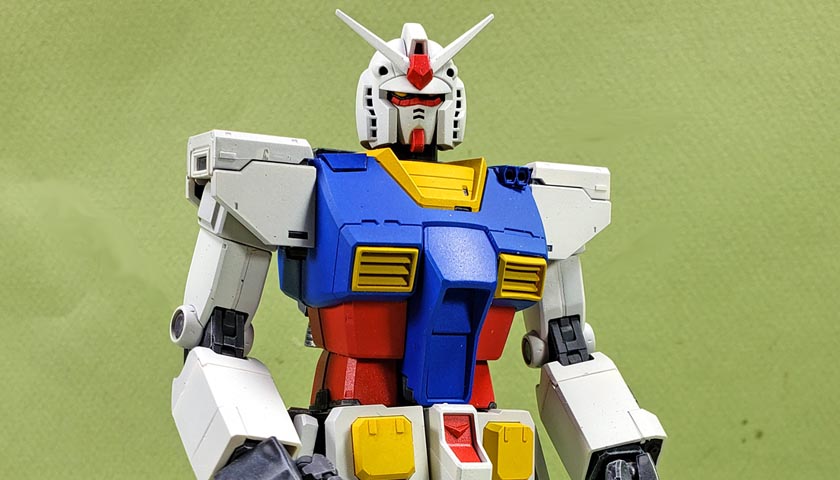
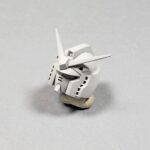

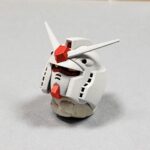

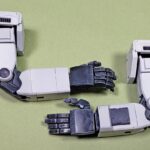
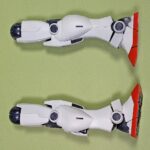
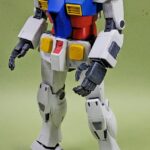
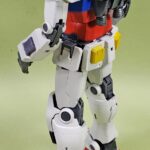
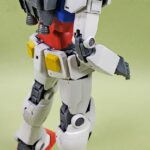
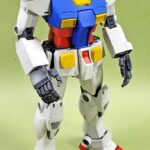
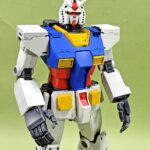
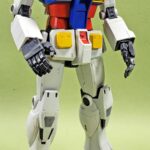

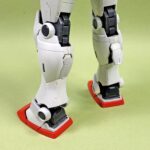
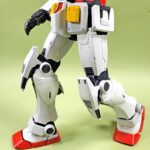
Leave a Reply